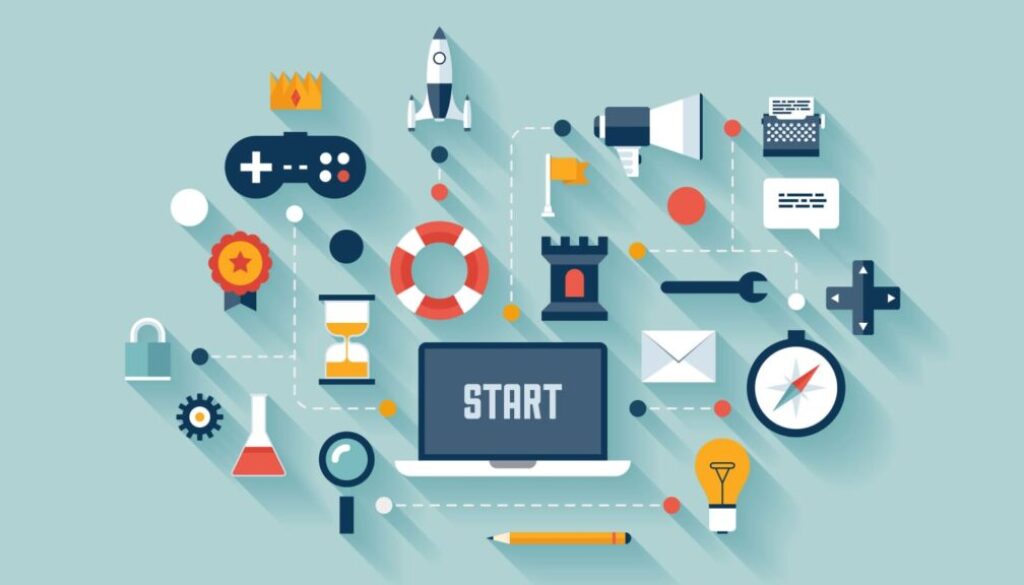In the rapidly evolving landscape of education technology (EdTech), one concept has emerged as a game-changer: gamification. This innovative approach to learning leverages the psychology of play, transforming mundane educational activities into engaging and interactive experiences. For EdTech companies and educators alike, gamification offers a competitive edge, reshaping how students interact with content while driving measurable outcomes.
The Gamification Paradigm Shift in EdTech
Gone are the days of traditional, one-size-fits-all teaching methods. Today’s learners demand personalized, engaging, and dynamic learning journeys. Gamification caters to this need by infusing game mechanics—such as points, badges, leaderboards, and levels—into educational platforms. These elements not only foster engagement but also trigger intrinsic motivation, enabling learners to achieve mastery in a fun and compelling way.
For instance, the use of progressive reward systems taps into students’ natural desire for accomplishment and recognition. A simple achievement badge for completing a math module can serve as a micro-incentive, boosting morale and driving continuous participation. When integrated effectively, such strategies turn passive learners into active participants, enhancing retention and comprehension.
Why Gamification is a Strategic Must-Have for EdTech Companies
In the highly competitive EdTech industry, differentiation is key. Gamification provides a unique value proposition that resonates with both educational institutions and learners. By transforming traditional e-learning modules into game-like environments, companies can amplify user satisfaction, boost subscription rates, and strengthen brand loyalty.
- Enhanced User Engagement: Engaged learners are more likely to stay on the platform longer, complete courses, and recommend them to peers. Gamification ensures stickiness by creating a compelling, addictive experience.
- Data-Driven Insights: Gamification systems naturally generate valuable user data. Metrics such as completion rates, time spent on tasks, and quiz performance help EdTech providers tailor content and optimize user experiences.
- Marketing Goldmine: The social elements of gamification—like leaderboards and peer challenges—can create viral loops. Students are motivated to share achievements with friends, offering organic growth and visibility for the platform.
Gamification in Action: Case Studies of Success
Several EdTech giants have already embraced gamification to stay ahead of the curve. Platforms like Duolingo have set a gold standard, with features like streaks and daily challenges that encourage consistent learning. Similarly, Kahoot! Combines gamification with collaborative learning, enabling teachers to create quiz-based competitions that students genuinely enjoy.
These success stories illustrate how gamification is not just a novelty but a proven strategy to achieve educational goals while expanding market share.
The Science Behind Gamification: Making Learning Stick
Gamification is backed by robust cognitive and behavioral principles. Concepts such as instant feedback and adaptive difficulty are rooted in behavioral psychology, making learning experiences rewarding yet challenging. The release of dopamine from achieving in-game rewards reinforces positive behaviors, ensuring learners return for more.
Furthermore, gamified learning aligns seamlessly with modern pedagogical frameworks. It supports constructivist learning by allowing students to actively construct knowledge through exploration and experimentation. In turn, this fosters critical thinking and problem-solving skills.
Challenges and the Road Ahead
Despite its benefits, gamification in EdTech is not without challenges. Designing game mechanics that balance fun and educational value requires careful planning and expertise. Over-gamifying or focusing excessively on rewards can lead to superficial learning experiences, diluting the core objective of education.
However, as technology advances, the integration of AI-driven personalization and AR/VR-enhanced environments promises to elevate gamification to new heights. EdTech companies that invest in these technologies will be well-positioned to dominate the market.
Conclusion: A Win-Win for Education and Business
Gamification is no longer a buzzword—it is a cornerstone strategy for the future of education. By blending the art of engagement with the science of learning, EdTech platforms can deliver unparalleled value to both students and educators. For businesses, gamification is a strategic enabler, driving growth and differentiation in an increasingly crowded marketplace. The time to play is now—because in the world of EdTech, the winners will be those who know how to turn learning into a game.
Pragati Mishra IMS Ghaziabad

